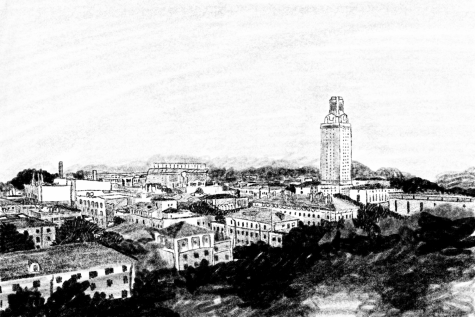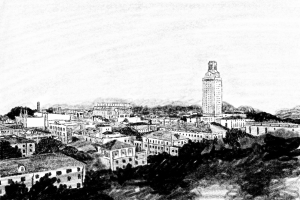Repairing old power outlets in campus facilities
January 13, 2023
UT is home to many state-of-the-art study spaces and classrooms, yet these spaces tend to have very few electrical power outlets, and some of those no longer function.
While this lack of outlets is especially prevalent in older facilities, like the Jackson Geological Sciences Building, the Perry Casteñeda Library and the Life Science Library, it appears to be a campus-wide issue.
“If you go to the JGB, in some of those rooms, they do have outlets, but they’re not functioning,” said Alexander Tsioutsias, a government and Plan II junior. “In the basement of the Gates Dell Complex and even in some of those rooms, they don’t have outlets. … How is it that even in a school dedicated to computer science you don’t have outlets in some of the classrooms?”
Given that many students spend prolonged hours on campus and rely on their computers for classwork, UT Facilities Services should improve its management of power outlets in campus study spaces and classrooms. With more proactive oversight, UT Facilities Services will be able to routinely identify which outlets are having issues and repair them efficiently.
Veronica Trevino, assistant director of issues management at UT Financial and Administrative Services, shared how it could be challenging to find comprehensive solutions for this issue.
“All buildings on campus are designed, built and organized differently,” Trevino said in an emailed statement. “Students should contact their respective building manager to report any maintenance issues or request the need for new outlets.”
An ideal way to begin outlet renovation is for students to directly contact the managers of the buildings in which they study. However, this is a tedious and roundabout solution.
While students should certainly communicate with building management to share their concerns, UT Facilities Services needs to be proactive. Rather than depending solely on student requests, they should take action to verify that outlets are working properly.
One way UT Facilities Services could be more proactive would be to carry out routine maintenance surveys to build stronger communication between students and administration. These surveys could take place over email and/or UT Facilities Services could place QR codes in buildings for students to scan. The survey questions would help to identify which buildings require the most attention and any outlet related issues students experience.
In addition, building management could conduct regular “spot checks” to determine which outlets function and which ones are out of order, regardless of student maintenance requests. This measure would be particularly useful in older buildings on campus, which likely have the most outdated amenities.
While it may be difficult to provide solutions in a straightforward and one size fits all fashion, there are proactive measures that UT Facilities Services could take to improve the situation. These measures could include routine surveys and spot checks that would help UT specify the need for renovation around campus. Given that many students depend on computers during the school day, these potential renovations would help to ensure that the availability of power outlets satisfies student demands.
D’Eramo is a Plan II and international relations and global studies junior from Tyler, Texas.











